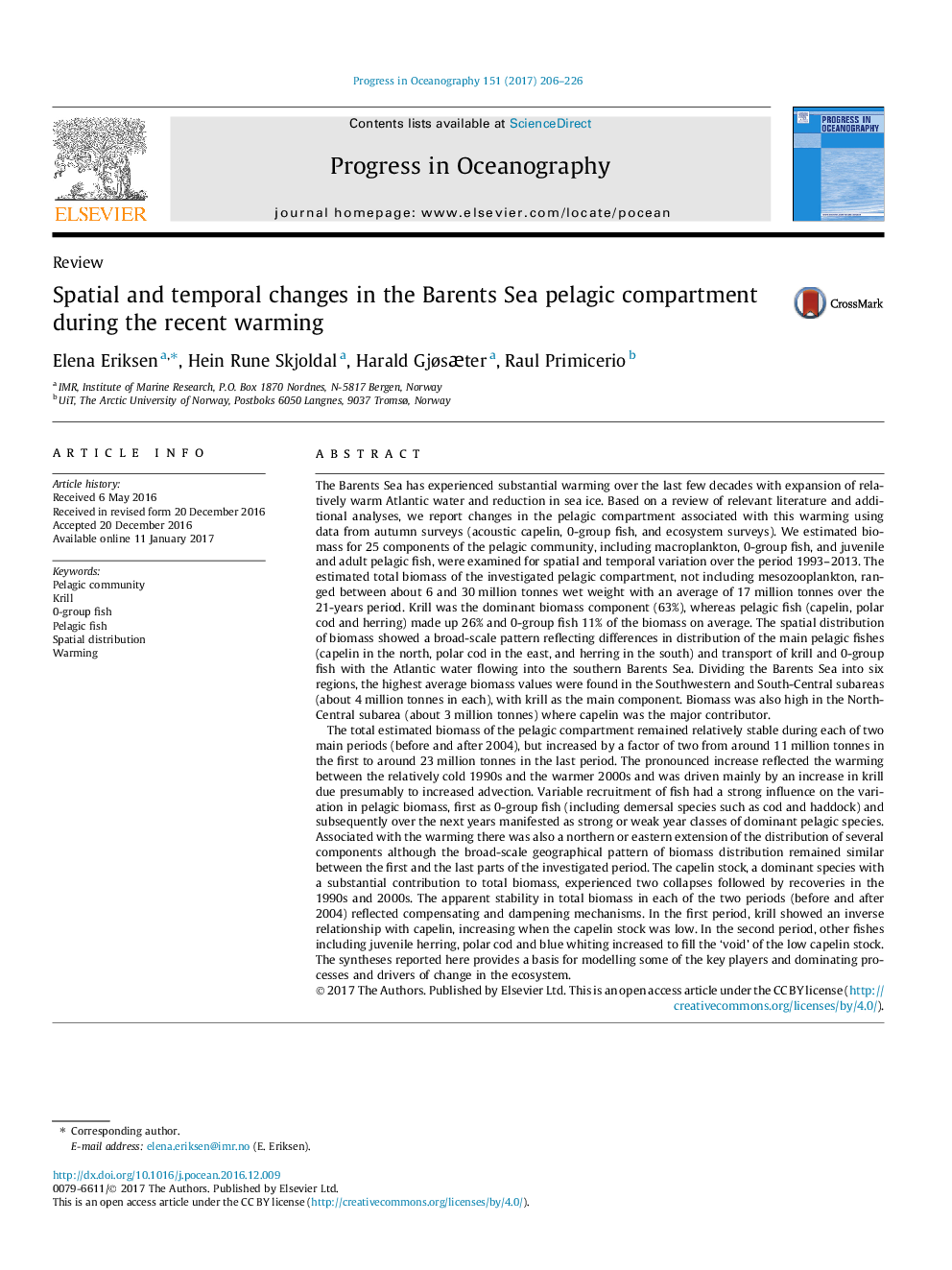| Article ID | Journal | Published Year | Pages | File Type |
|---|---|---|---|---|
| 5766525 | Progress in Oceanography | 2017 | 21 Pages |
Abstract
The total estimated biomass of the pelagic compartment remained relatively stable during each of two main periods (before and after 2004), but increased by a factor of two from around 11Â million tonnes in the first to around 23Â million tonnes in the last period. The pronounced increase reflected the warming between the relatively cold 1990s and the warmer 2000s and was driven mainly by an increase in krill due presumably to increased advection. Variable recruitment of fish had a strong influence on the variation in pelagic biomass, first as 0-group fish (including demersal species such as cod and haddock) and subsequently over the next years manifested as strong or weak year classes of dominant pelagic species. Associated with the warming there was also a northern or eastern extension of the distribution of several components although the broad-scale geographical pattern of biomass distribution remained similar between the first and the last parts of the investigated period. The capelin stock, a dominant species with a substantial contribution to total biomass, experienced two collapses followed by recoveries in the 1990s and 2000s. The apparent stability in total biomass in each of the two periods (before and after 2004) reflected compensating and dampening mechanisms. In the first period, krill showed an inverse relationship with capelin, increasing when the capelin stock was low. In the second period, other fishes including juvenile herring, polar cod and blue whiting increased to fill the 'void' of the low capelin stock. The syntheses reported here provides a basis for modelling some of the key players and dominating processes and drivers of change in the ecosystem.
Related Topics
Physical Sciences and Engineering
Earth and Planetary Sciences
Geology
Authors
Elena Eriksen, Hein Rune Skjoldal, Harald Gjøsæter, Raul Primicerio,
